Results
-
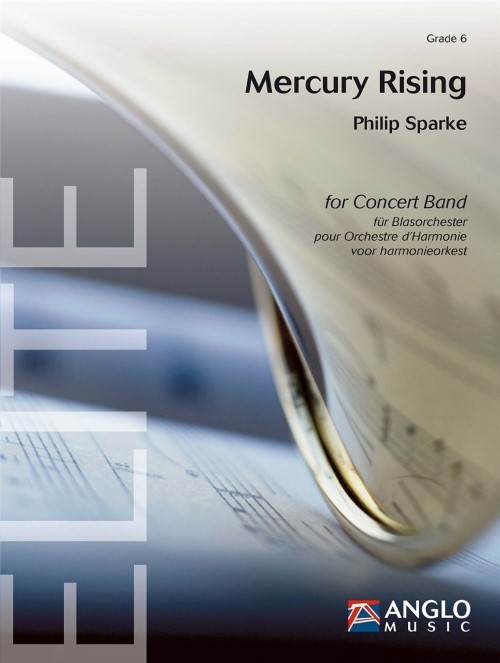 £122.50
£122.50Mercury Rising (Concert Band - Score and Parts) - Sparke, Philip
Mercury Rising was commissioned by sinfonisches blasorchester wehdel and its conductor Thomas Ratzek, to celebrate their 50th anniversary in 2018. They premiered this piece in their half-century concert on 2nd November 2018 in the Bremerhaven Stadttheater in Germany. Designed as a virtuosic and lively opener, Mercury Rising opens with nervous energy and driving, syncopated rhythms in a blaze of colour. The horns and saxophones then introduce a broad melody, which the trumpets subsequently take up after a change of tonality. A quieter moment introduces a distant fanfare on muted horns over bubbling semiquavers in the low clarinets. This is interrupted by a passionate tenor melody but soon returns on the full brass section, accompanied by echoes of the opening woodwind figuration, and is extended to bring the piece to a triumphant close. Duration: 3.30
Estimated dispatch 7-14 working days
-
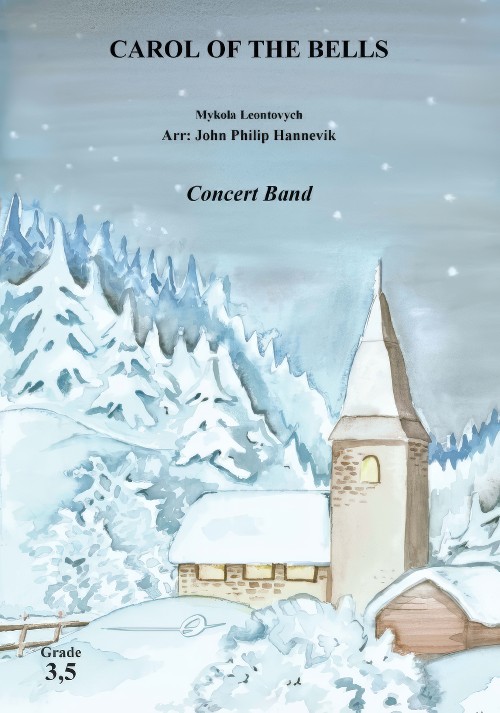 £94.00
£94.00Carol of the Bells (Concert Band - Score and Parts) - Leontovych, Mykola Dmytrovich - Hannevik, John Philip
Ukrainian composer Mykola Leontyovich composed this famous Christmas Carol in 1914. The carol is based on a folk chant called Shchedryk. The composer was a supporter of the independence movement in Ukraina, and was assassinated by a Soviet agent in 1921.The carol was made famous after the adaption by Peter J. Wilhousky in 1936. Wilhousky worked as an arranger for the NBC symphony orchestra. It is also well known from popular culture, like the film Home Alone (1990), and a version by the vocal group Pentatonix.Duration: 2.30
Estimated dispatch 7-14 working days
-
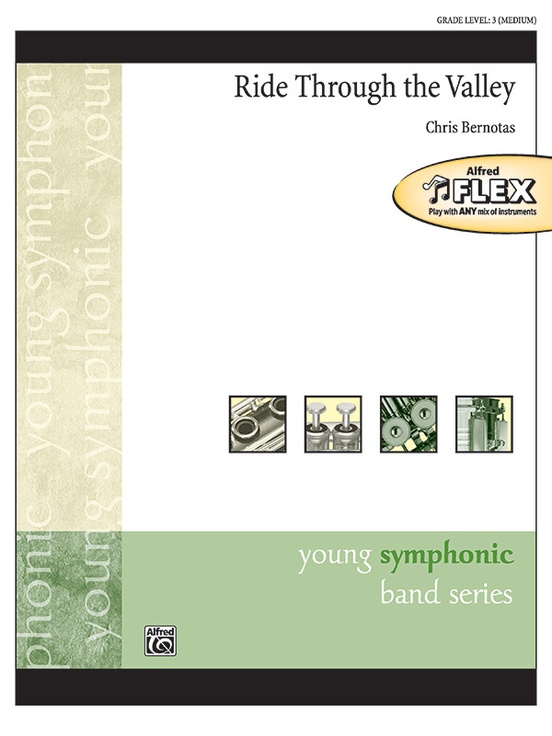 £73.50
£73.50Ride Through the Valley (Flexible Ensemble - Score and Parts) - Bernotas, Chris M.
This version of Ride Through the Valley by Chris Bernotas is designed with maximum flexibility for use by any mix of instruments: wind, strings, and percussion, including like or mixed-ensembles with as few as 5 players. The suggested instrumentation and a customisable Teacher Map will help you plan out how to best assign parts to suit your ensemble's needs. It also comes with supplemental parts for maximum flexibility. With the purchase of this piece, permission is granted to photocopy the parts as needed for your ensemble. A percussion accompaniment track is also available as a free download. String parts have been carefully edited with extra fingerings and appropriate bowings to support students in mixed ensembles playing in less familiar keys. The fast-paced opening of Bernotas' Ride Through the Valley builds momentum, leading to a bright and tuneful main theme. A lyrical contrasting section follows featuring a warmth of colors enhanced by vibraphone and gracefully cascading arpeggiated pyramids. A brief transition leads to a return of the main theme including a key change, bringing the piece to a driving conclusion. Duration: 4.30
Estimated dispatch 7-14 working days
-
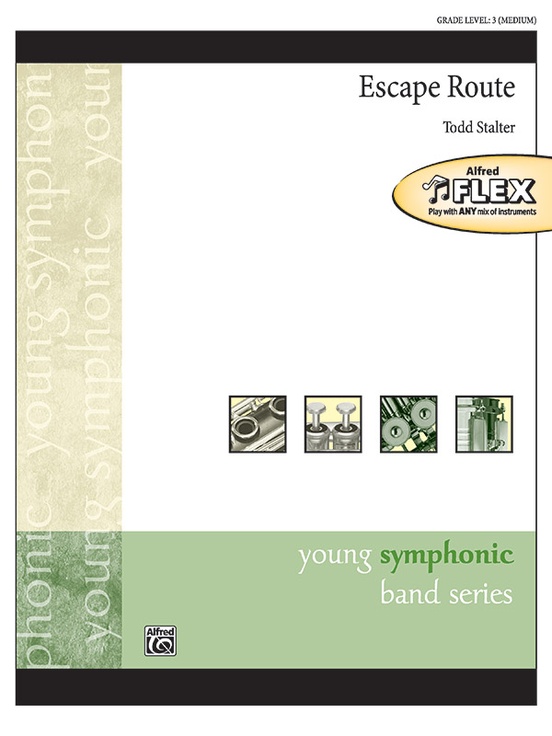 £73.50
£73.50Escape Route (Flexible Ensemble - Score and Parts) - Stalter, Todd
This version of Escape Route by Todd Stalter is designed with maximum flexibility for use by any mix of instruments: wind, strings, and percussion, including like or mixed-ensembles with as few as 5 players. The suggested instrumentation and a customisable Teacher Map will help you plan out how to best assign parts to suit your ensemble's needs. It also comes with supplemental parts for maximum flexibility. With the purchase of this piece, permission is granted to photocopy the parts as needed for your ensemble. A percussion accompaniment track is also available as a free download. String parts have been carefully edited with extra fingerings and appropriate bowings to support students in mixed ensembles playing in less familiar keys. Escape Route by Todd Stalter contains musical explorations of the many different actions implied in its title, such as quickness, stealth, boldness, evasion, elusiveness, and the adrenaline rush that accompanies them. Duration: 2.00
Estimated dispatch 7-14 working days
-
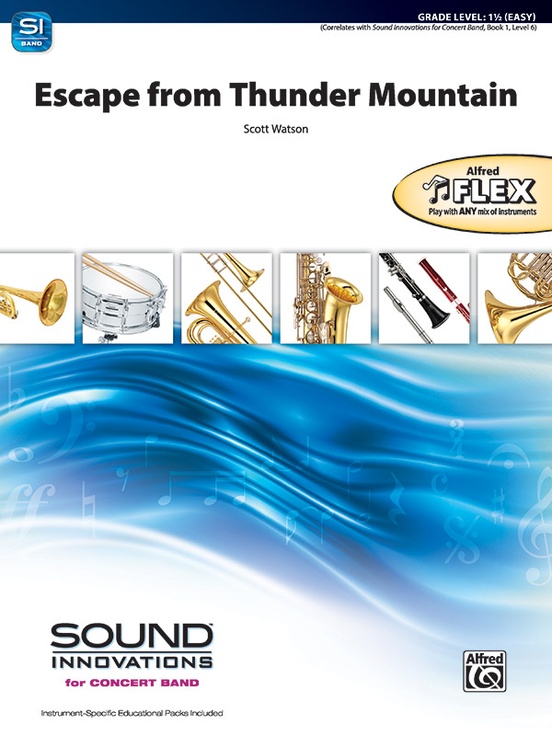 £53.95
£53.95Escape from Thunder Mountain (Flexible Ensemble - Score and Parts) - Watson, Scott
This version of Escape from Thunder Mountain by Scott Watson is designed with maximum flexibility for use by any mix of instruments: wind, strings, and percussion, including like or mixed-ensembles with as few as 4 players. The suggested instrumentation and a customisable Teacher Map will help you plan out how to best assign parts to suit your ensemble's needs. The 4-part instrumentation will support balanced instrumentation of the lower voices. It also comes with supplemental parts for maximum flexibility. With the purchase of this piece, permission is granted to photocopy the parts as needed for your ensemble. A percussion accompaniment track is also available as a free download. String parts have been carefully edited with extra fingerings and appropriate bowings to support students in mixed ensembles playing in less familiar keys. The tropical island volcano, Thunder Mountain, has lain dormant for years. As a party of adventurous researchers work atop the legendary mountain, it begins to shake with pre-eruption tremors! Check out this original composition by Scott Watson! Duration: 4.45
Estimated dispatch 7-14 working days
-
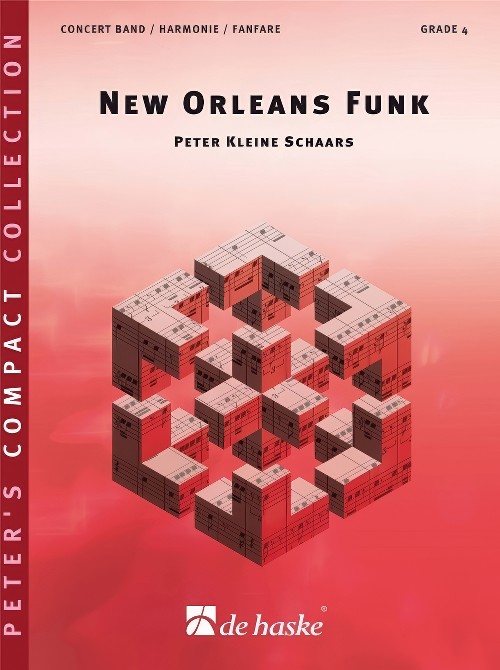 £68.99
£68.99New Orleans Funk (Flexible Ensemble - Score and Parts) - Schaars, Peter Kleine
Funk is a very rhythmic music style that finds its origin in the 1960s. The American artist James Brown and the New Orleans-based group The Meters are considered the founders of this genre. Funk is characterized by an independent bass line that emphasizes each first beat of the bar (the one), as well as by a rhythmic combination of syncopated melodies and accompaniments with lots of harmonic additions. This style-conscious composition by Peter Kleine Schaars contains a healthy blend of the harmonic ingredients as well as the rhythmic challenges of funk music. On the one hand, New Orleans Funk is an educational exercise with the rhythmic cells 9, 10, 14, 15 and 16: on the other hand, it is a funky highlight of your rehearsal or concert!Duration: 3.15
Estimated dispatch 7-14 working days
-
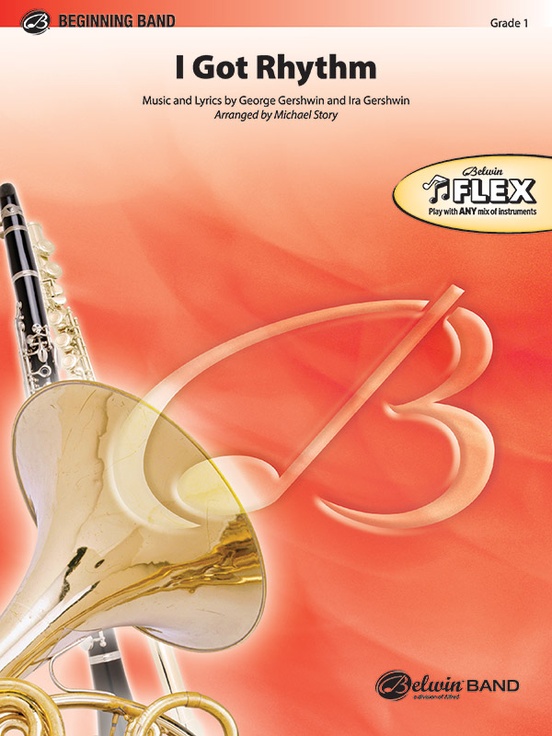 £60.00
£60.00I Got Rhythm (Flexible Ensemble - Score and Parts) - Gershwin & Gershwin - Story, Michael
This version of I Got Rhythm arranged by Michael Story is designed with maximum flexibility for use by any mix of instruments: wind, strings, and percussion, including like or mixed-ensembles with as few as 4 players. The suggested instrumentation and a customisable Teacher Map will help you plan out how to best assign parts to suit your ensemble's needs. The 4-part instrumentation will support balanced instrumentation of the lower voices. It also comes with supplemental parts for maximum flexibility. With the purchase of this piece, permission is granted to photocopy the parts as needed for your ensemble. A percussion accompaniment track is also available as a free download. String parts have been carefully edited with extra fingerings and appropriate bowings to support students in mixed ensembles playing in less familiar keys. This timeless George and Ira Gershwin jazz classic has been covered by dozens of popular artists. The song remains one of the most recognizable melodies from the 20th century. In a charismatic contemporary arrangement, I Got Rhythm is accessible to first-year students and will be an upbeat addition to any program. Duration: 1.45
Estimated dispatch 7-14 working days
-
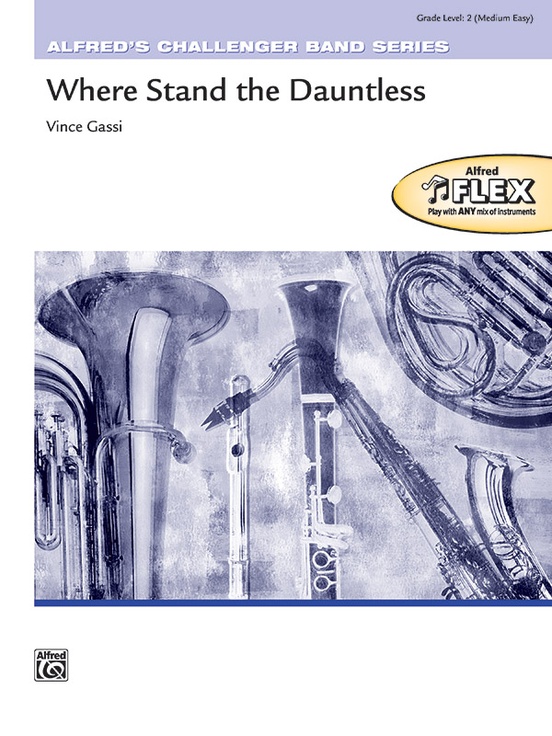 £62.95
£62.95Where Stand the Dauntless (Flexible Ensemble - Score and Parts) - Gassi, Vince
This version of Where Stand the Dauntless by Vince Gassi is designed with maximum flexibility for use by any mix of instruments: wind, strings, and percussion, including like or mixed-ensembles with as few as 5 players. The suggested instrumentation and a customisable Teacher Map will help you plan out how to best assign parts to suit your ensemble's needs. It also comes with supplemental parts for maximum flexibility. With the purchase of this piece, permission is granted to photocopy the parts as needed for your ensemble. A percussion accompaniment track is also available as a free download. String parts have been carefully edited with extra fingerings and appropriate bowings to support students in mixed ensembles playing in less familiar keys. A fanfare, a lyrical theme, and driving energy embody the spirit of the dauntless, the brave and amazing young musicians of Dolphin Senior Public School in Mississauga, Ontario, Canada. Where Stand the Dauntless by Vince Gassi is an exciting work, and a perfect concert opener and contest piece. Duration: 2.30
Estimated dispatch 7-14 working days
-
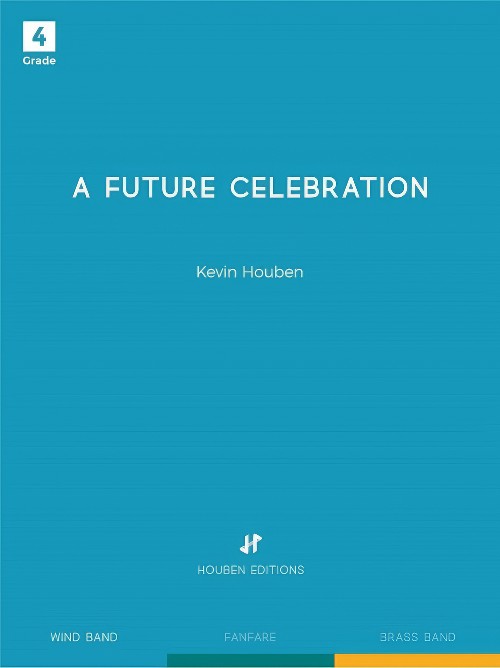 £104.00
£104.00A Future Celebration (Concert Band - Score and Parts) - Houben, Kevin
Future Celebration was composed on the occasion of the 125th anniversary of the Royal Socialist Wind Band 'De Toekomst' from Sint-Niklaas (Belgium). In this colourful compostion Kevin Houben succeeds in evoking the bustling textile and cigar industry of the nineteenth and twentieth century in this East Flemish city Sint-Niklaas. After all, these crafts were characteristic for the wealth they brought to the city. Still testimony of this are the 2 unique (niche)museums in Sint-Niklaas: the Knitwear museum and the Pipe and Tobacco museum. Even in times of great crises eg. during the Interbellum the city continued flourishing proving the unique collection of classified art deco houses, amongst others the former People's House, in which the Royal Socialist Wind Band still rehearse. This historic background of Sint-Niklaas and of the Wind Band in particular has been musically presented by Kevin Houben in Future Celebration. The brief, but energetic and powerful opening of the work by the brass instruments gives musical expression to Sint-Niklaas as a prosperous city. After the presentation of a majestic and lyrical theme by the woodwinds an allegro with a cheerful theme takes a look at the future, hopefully looking at the next milestones/ celebrations the city and its orchestra are still expecting in the future. Duration: 6.00
Estimated dispatch 7-14 working days
-
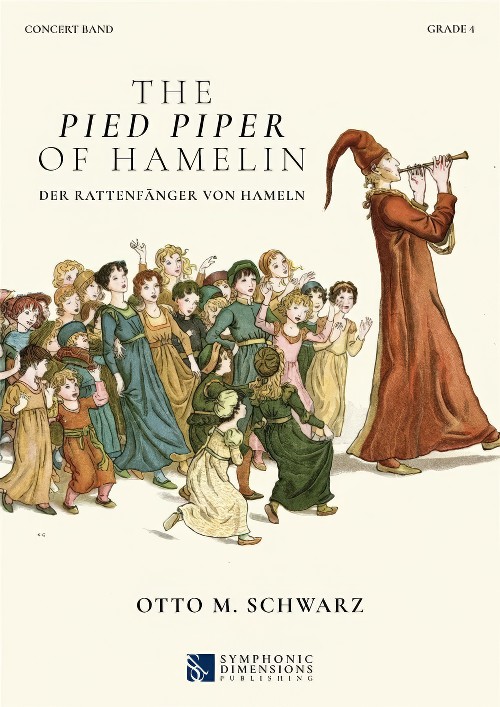 £163.99
£163.99The Pied Piper of Hamelin (Concert Band - Score and Parts) - Schwarz, Otto M.
Stories, sagas and legends--who among us don't know them? Always delivered with a tinge of brutality, these cautionary tales are a legacy of moral education from times past: inquisitive children alone in the forest are generally eaten by a witch; the 'Soup-Kasper' of Hoffmann's Struwwelpeter dies from starvation rather than eating his soup; anyone letting in strangers usually gets devoured; anyone who plays with matches gets burned; and thumb-suckers get their thumbs cut off. The list of unfortunate demises is almost endless.In the tale of The Pied Piper of Hamelin, parents lose their children through greed, ridicule, scorn and a failure to appreciate art. There is still a street in the town of Hamelin in which neither drumming nor playing has not been allowed since 130 children disappeared into a mountain, never to be seen again. This composition by Otto M. Schwarz opens with exactly this scene, taking us back to the year 1284. As in many towns at the time, Hamelin in Germany suffered with hygiene problems--rats and mice began to multiply rapidly, and the town was overrun with the plague. There appeared a man dressed in colourful clothes who promised the locals to free them from this burden. They agreed and settled on a fee. Then the man pulled out a pipe and began to play. When the rats and mice heard this, they followed him. He led the animals into the Weser River, where they all drowned. Back in town, the people refused to pay him. They didn't recognise this man's skills and knowledge and were only prepared to pay for simple labour. A pact with the devil was made, which led to the Pied Piper leaving the town in a furious rage. One Sunday, when many people were at church, he returned, took out his flute and began to play. The town's children were so enchanted by his playing that they followed him. He led them out of the town and disappeared with them forever into a mountain forever. Of all the children, only two survived--however one was mute, and one was blind. In the street from which the children left Hamelin, music may no longer be played in memory of this event. The work may be performed in two different versions: 1. Purely instrumental (without narrator)--the GPs (pauses) must be kept short 2. With narrator--he speaks in the GPs but not during the music.Duration: 14.15
Estimated dispatch 7-14 working days
